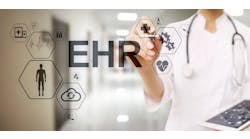Electronic prescribing, known as ePrescribing, is growing steadily in California and is potentially increasing the safety of the prescribing process, according to a new report from Cal eConnect, a non-profit which serves governance for California’s health information exchange (HIE). About 25 percent of the state’s physicians are sending prescriptions electronically, the report estimates, compared with three percent in 2007. At the same time, just 16 percent of eligible prescriptions are routed electronically, despite the fact that most community pharmacies are set up for ePrescribing.
“While much has been done to move California forward on ePrescribing, much more work is ahead. The collaborative environment among health plans, providers, and pharmacies is impressive and momentum is building toward improved, safer care for patients,” Ron Jimenez, M.D., co-chair of the Cal eConnect ePrescribing Advisory Group and a practicing pediatrician, said in a statement.
For consumers, ePrescribing means patients do not have to take a paper prescription to their pharmacies; the order is sent electronically directly from their doctor’s office, reducing errors caused by illegible handwriting, while improving administrative efficiencies. Electronic systems help prescribers and pharmacists identify medication allergies, potential harmful drug-to-drug interactions and drug duplications, and check whether patients pick up their medications.
While most patients have prescription benefit information and medication histories available from their health plans, the utilization of this information at the point-of-care is low. Only 18 percent of patient visits involved a prescription benefit query and only 10 percent involved a check of medication history.
The analysis also found that certain areas of the state have lower access to ePrescribing than others and lag in the potential for safety and efficiency gains. Sacramento, San Jose, Tulare, San Bernardino, and Riverside Counties were among those with high percentages (about 70 to 100 percent) of residents’ covered health plans participating in ePrescribing. Regions in northern California, had low percentages (less than 50 percent).

